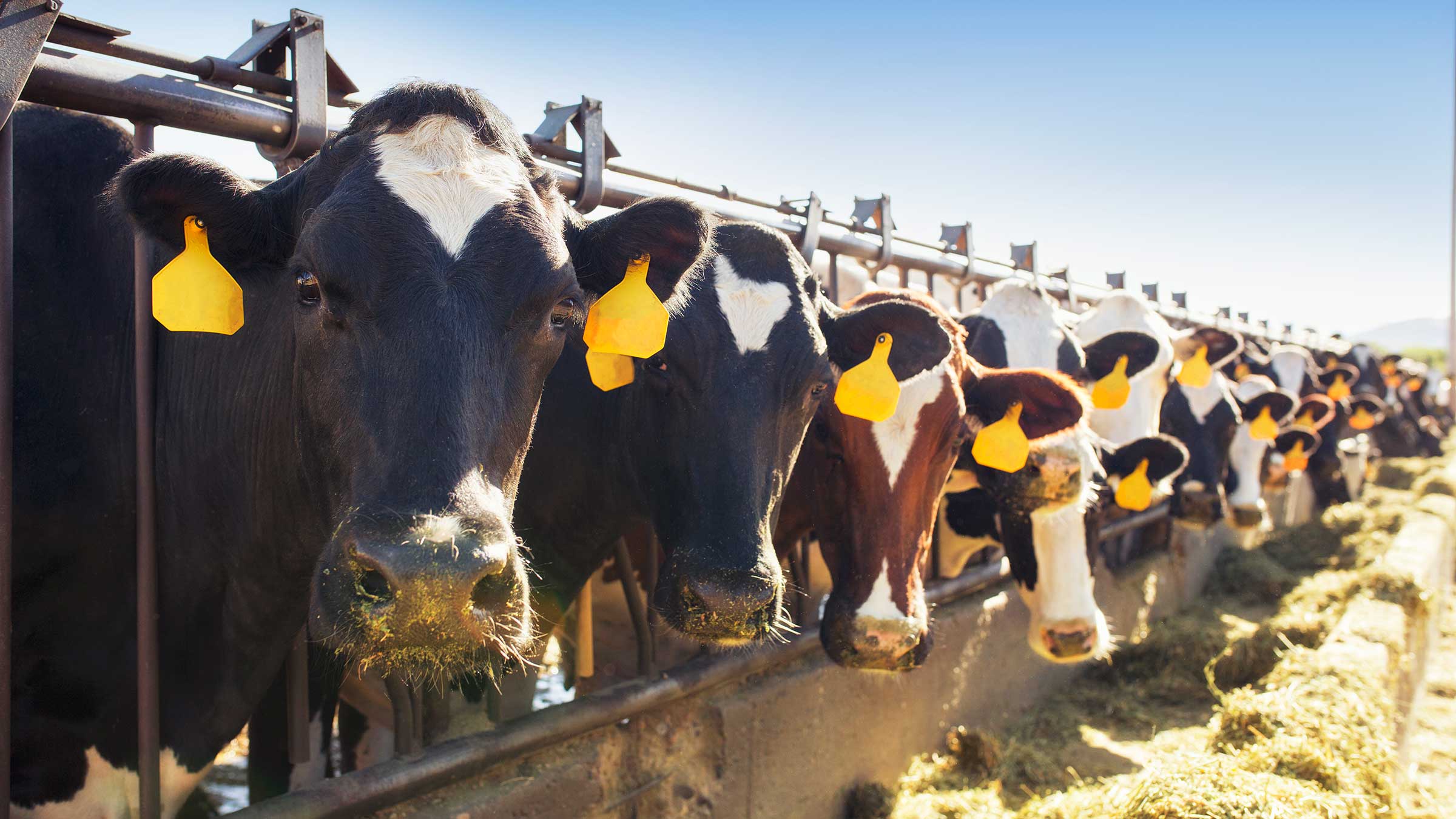As bird flu spreads to cows and infected people, here’s what to know about the latest avian flu strains

A dominant strain of avian flu, or “bird flu” (H5N1) has jumped species, spreading to numerous animals, including dairy cattle and even to human farm workers.
Avian influenza isn’t new, but the virus continues to evolve and is likely here to stay, says Andrew Bowman, DVM, PhD, a molecular epidemiologist in the Department of Veterinary Preventive Medicine at The Ohio State University.
“When we’ve dealt with highly pathogenic avian influenza in the U.S. before, it usually died out in wild birds, and we managed to control it in poultry,” explains Dr. Bowman, who studies influenza in animal populations. “This one is hanging on in wild birds and continues to spread. It’s just always there with a constant threat of spillover; I think that’s what’s different today.”
Can H5N1 spread among people?
While there’s no evidence that the virus is spreading from person to person, experts who track these new strains remain cautious.
For bird flu to become the next pandemic, it would have to spread person to person.
“You don’t know which strain might come across and be able to do that,” Dr. Bowman says. “We also don’t really know what happens when the virus sticks around in other species for a long time. Like with dairy cattle, if the virus keeps spreading from cow to cow, does that make it more adapted to mammals and potentially more capable of transmitting human to human?
“It certainly gives me concern. We are in a very different influenza situation than we’ve ever been in before.”
The widespread outbreak in different species has long-lasting effects on food systems, the welfare of animals and the potential for it to be passed through people.
At Ohio State, researchers are working on ways to try to reduce risk. This includes educating those who work with animals, studying the virus, predicting its behavior in humans and improving vaccines.
What is avian influenza?
The outbreak that continues to spread and evolve traces back to 2021, when H5 came across the Atlantic Ocean into Canada and spread down across the U.S., Dr. Bowman says.
Avian influenza is a type A virus, also known for causing bird flu in humans, pigs, horses, cats and other species as of 2024.
Scientists use genotypes, or the genetic sequences of the virus, to track and find effective treatments.
For example, the genotype for H5N1 found in cattle is a different H5N1 than what was found in pigs.
“They’re all flu viruses and they all originated in birds. It’s not as simple as saying, ‘It’s H5N1,’” Dr. Bowman says. “It’s like describing the virus as a guy in red shirt and blue pants. There’s still a lot of diversity within that descriptor.”
There have been poultry flocks infected with H5N1 in Ohio, and a dairy herd was infected in 2024.
“We’re certainly seeing spillovers, and wild bird surveillance continues to indicate that we have various strains of H5N1 flying over our heads every day in wild birds,” Dr. Bowman says.
Avian influenza remains a moving target
Bird flu is constantly changing.
A different strain of bird flu, H5N9, is now also showing up in some poultry flocks with the potential to keep spreading through wild birds.
No H5N9 cases have been found in Ohio yet.
Vaccines for animals present a challenge
The first outbreak of H5N1 in cattle surfaced in March 2024.
There’s a vaccine for people and birds. However, the dairy industry has never faced this before, and there’s no flu vaccine for cattle, Dr. Bowman says.
Most consequences for cows are mild, but some cases have the potential for severe symptoms, including death.
Bird flu in cows causes infections localized in the mammary glands of cattle.
The infection is unexpectedly localized to the dairy cows’ udders — a part of the body where researchers never thought the flu could show up.
“Influenza usually affects the upper respiratory tract in mammals,” Dr. Bowman says.
Vaccine trials are already underway for animals, but it’s a more complicated situation because those animals are food products and there are export requirements, Dr. Bowman says.
Some countries that won’t accept a product from vaccinated animals. That’s one reason there’s been a low acceptance of vaccine in livestock.
There have been reports of isolated crossover cases of bird flu to other mammals, particularly in wildlife, which is being tracked by the U.S. Department of Agriculture’s Animal and Plant Health Inspection Service (APHIS).
What we know about bird flu cases in people
The risk to humans remains low, according to the federal Centers for Disease Control and Prevention.
Isolated cases with infected farm workers started showing up in April 2024. Ohio had its first human case in February 2025.
One isolated case of a non-farm worker resulted in death in the U.S. The person had underlying health issues and was exposed to wild birds and a backyard flock of poultry.
“What’s important to know is that fatal cases in humans are different H5 strains than the cattle strain,” Dr. Bowman says. “That might be too broad of a term when we’re talking about the risk to humans. The human cases, while tragic, aren’t totally unexpected.”
Signs of bird flu in people
- A fever that spikes and does not respond to over-the-counter medicine
- Very mild conjunctivitis or eye infection, also known as pink eye
- Mild respiratory symptoms, such as coughing that progress
What you can do to reduce the risk of getting bird flu
- Vulnerable populations, including those who are very young, old or immunocompromised, should be cautious if they’re going to be somewhere they could encounter infected animals.
- Those who work with livestock or participate in recreational activities involving wild birds should be mindful. In most cases, those who have been infected work with poultry or livestock. These workers should be using personal protective equipment.
- A diagnostic lab test can determine whether it’s bird flu. When it’s identified early and successfully treated, most bird flu cases are mild in humans.
“If you are around poultry, cattle, wild birds, or wild animals that are sick with respiratory illness, and become ill yourself, be sure to alert your health care provider to the exposure because you may have contracted H5N1 influenza,” says Jacqueline Nolting, PhD, an assistant professor at Ohio State’s Department of Veterinary Preventive Medicine.
- Make sure the dairy products you consume are pasteurized, and cook meat to the proper temperatures.
“There is no reason to avoid poultry, beef, or dairy products right now. Pasteurization and cooking inactivates influenza viruses, so products are safe to consume,” Dr. Nolting says. “Cook poultry products to an internal temperature of 165 degrees. Always follow recommendations for safe handling of raw food products as well.”
- If you’re a cat owner, limit opportunities where cats will be able to prey upon birds or find a bird carcass.
“Keeping pets away from wild birds and wildlife is the best way to protect them. Do not let your pets carry, lick, eat, or play with wild birds,” Dr. Nolting says. “Also, if you notice a dead animal, remove and dispose of the remains immediately and wash your hands after disposal.”
- Avoid feeding your pet raw pet food.
“We want to limit all those exposures and potential infections,” Dr. Bowman says.

Compassionate, cutting-edge care for pets and animals
At The Ohio State University Veterinary Medical Center, our top priority is making the world healthier for animals and the families who love and care for them.
Learn more about our services



